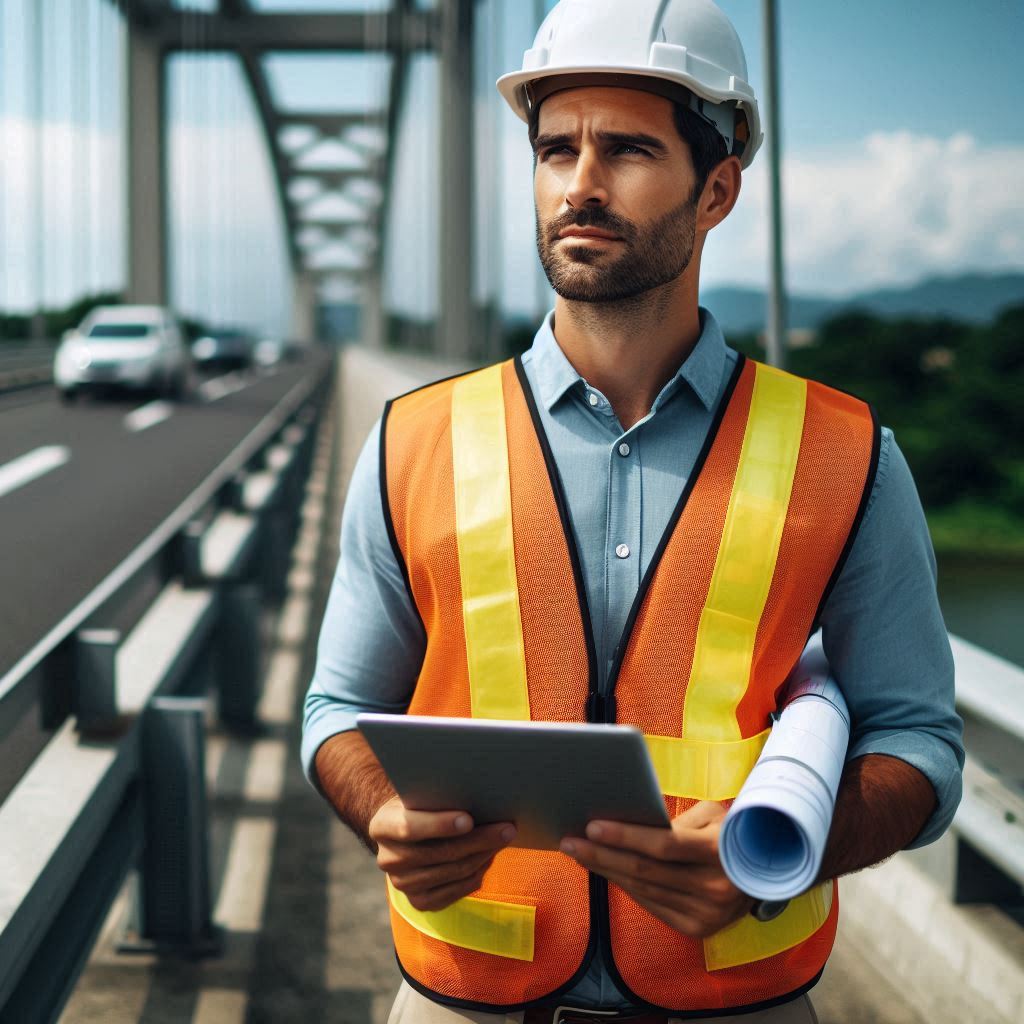Introduction
Transportation engineers play a crucial role in urban planning.
They design, develop, and maintain transportation systems in cities.
These professionals ensure that urban areas have efficient, safe, and sustainable transportation networks.
Their work impacts daily commutes, economic growth, and environmental sustainability.
Brief Introduction to the Topic of Transportation Engineers in Urban Planning
Transportation engineers focus on creating and improving transportation infrastructure in urban settings.
They analyze traffic patterns, plan road layouts, and develop public transit systems.
Their expertise is essential for addressing the challenges of urban mobility.
They work with urban planners, government agencies, and private firms to create transportation solutions that meet the needs of growing populations.
Urban areas face unique transportation challenges due to high population density and limited space.
Transportation engineers use advanced technology and data analysis to optimize traffic flow and reduce congestion.
They also prioritize the safety of pedestrians, cyclists, and drivers.
By designing efficient transportation systems, they contribute to the overall quality of life in cities.
Importance of Transportation Engineers in Creating Sustainable and Efficient Transportation Systems in Cities
Transportation engineers are vital for creating sustainable and efficient transportation systems in urban areas.
They help reduce the environmental impact of transportation by promoting the use of public transit, cycling, and walking.
They design systems that minimize greenhouse gas emissions and reduce reliance on fossil fuels.
Sustainable transportation systems are crucial for combating climate change and improving air quality.
Transportation engineers play a key role in developing green infrastructure, such as bike lanes, pedestrian pathways, and electric vehicle charging stations.
They also work on projects that integrate renewable energy sources into transportation networks.
Efficient transportation systems are essential for economic growth and development.
Transportation engineers design networks that facilitate the smooth movement of goods and people.
This efficiency reduces travel time, lowers transportation costs, and boosts productivity.
Businesses benefit from reliable transportation systems that enable timely deliveries and efficient logistics.
Transportation engineers also focus on improving public transit systems.
They design routes, schedules, and infrastructure that make public transit more accessible and attractive to urban residents.
Effective public transit reduces traffic congestion, lowers pollution levels, and provides affordable transportation options for all citizens.
Generally, transportation engineers are indispensable in urban planning.
They create transportation systems that are safe, efficient, and sustainable.
Their work addresses the complex challenges of urban mobility and contributes to the overall well-being of city residents.
By developing innovative solutions and leveraging technology, transportation engineers ensure that urban areas can thrive and grow sustainably.
Overview of the Role of Transportation Engineers
Transportation engineers are crucial in developing efficient and sustainable urban areas.
They design, plan, and oversee transportation systems, ensuring they meet the community’s needs.
By integrating various transportation modes, they enhance mobility, reduce congestion, and improve safety.
Their work impacts how people commute, influencing the overall quality of urban life.
Definition of Transportation Engineering
Transportation engineering focuses on the design, operation, and management of transportation systems.
This field involves studying the movement of people and goods, optimizing transportation infrastructure, and implementing technological advancements.
It encompasses roads, bridges, railways, airports, and public transit systems.
By using engineering principles, transportation engineers aim to create safe, efficient, and sustainable transportation networks that cater to present and future demands.
Explanation of the Responsibilities of Transportation Engineers
Transportation engineers have diverse and critical responsibilities.
They conduct traffic studies, analyze data, and develop models to predict future transportation needs.
They design roadways, traffic control systems, and public transportation facilities.
Engineers also ensure that infrastructure projects comply with safety standards and environmental regulations.
Additionally, they collaborate with urban planners, government agencies, and the public to incorporate feedback and address concerns.
Their expertise helps minimize congestion, reduce accidents, and promote efficient travel.
Importance of Considering Transportation in Urban Planning
Incorporating transportation in urban planning is vital for creating livable and functional cities.
Effective transportation systems connect people to jobs, education, healthcare, and recreational activities.
Well-planned transportation infrastructure reduces travel time, decreases pollution, and enhances the quality of life.
It supports economic growth by facilitating the efficient movement of goods and services.
Furthermore, considering transportation in urban planning helps accommodate population growth and urbanization trends.
By prioritizing sustainable and integrated transportation solutions, cities can become more resilient and adaptable to future challenges.
In summary, transportation engineers play a pivotal role in shaping urban environments.
Their work ensures that transportation systems are safe, efficient, and sustainable.
By considering transportation in urban planning, we can create cities that are well-connected, economically vibrant, and environmentally responsible.
Transportation engineering is essential for building communities where people can thrive.
Read: Biomedical Engineering: Regulatory Affairs
Collaboration with Urban Planners
Importance of Collaboration Between Transportation Engineers and Urban Planners
Collaboration between transportation engineers and urban planners is essential for creating efficient and sustainable cities.
They must work together to integrate transportation systems with urban design, ensuring seamless mobility.
Effective collaboration helps to address the diverse needs of city residents, promoting accessibility and reducing congestion.
How Transportation Engineers Contribute to the Overall Planning Process
Transportation engineers play a crucial role in the urban planning process.
They design and implement transportation systems that support city infrastructure.
Their expertise in traffic flow, road design, and public transit ensures that transportation networks are safe and efficient.
By analyzing data and forecasting future needs, they help urban planners make informed decisions that benefit the community.
Examples of Successful Collaborations Between Both Parties
Successful collaborations between transportation engineers and urban planners have transformed cities worldwide.
In Curitiba, Brazil, their joint efforts created a highly efficient bus rapid transit system, reducing traffic and pollution.
In Copenhagen, Denmark, their collaboration led to the development of extensive cycling infrastructure, making the city bike-friendly.
These examples highlight the positive impact of teamwork in urban planning.
Read: Graduate Studies in Biomedical Engineering
Integration of different modes of transportation
One of the crucial aspects of urban planning is the integration of different modes of transportation to create a sustainable and efficient transport system that meets the needs of the population.
Transportation engineers play a key role in this process, working to design and implement solutions that prioritize the use of alternative modes of transportation.
Explanation of Different Modes of Transportation
- Public Transit: This includes buses, trains, subways, and other forms of mass transit that can move a large number of people efficiently.
- Cycling: Cycling is a sustainable and healthy mode of transportation that is gaining popularity in urban areas for its environmental benefits.
- Walking: Walking is the most basic form of transportation and promotes physical activity while reducing the carbon footprint.
How Transportation Engineers Integrate Different Modes
Transportation engineers work to integrate these various modes of transportation into urban planning by designing infrastructure that supports the use of public transit, cycling, and walking.
They focus on creating safe and accessible routes for pedestrians and cyclists, as well as efficient public transportation systems that connect different parts of the city.
They also consider factors such as land use planning, community needs, and environmental sustainability when designing transportation systems.
By integrating these modes of transportation, engineers aim to reduce traffic congestion, improve air quality, and create a more livable urban environment for residents.
Benefits of Promoting Alternative Modes of Transportation
- Reduced Traffic Congestion: By promoting public transit, cycling, and walking, cities can reduce the number of vehicles on the road, easing traffic congestion.
- Improved Air Quality: Alternative modes of transportation produce fewer emissions than cars, leading to improved air quality and reduced pollution levels.
- Healthier Communities: Walking and cycling promote physical activity, leading to healthier and more active communities.
- Cost Savings: Public transit, cycling, and walking are often more cost-effective than owning and maintaining a car, resulting in savings for individuals and the city.
In general, transportation engineers play a vital role in urban planning by integrating different modes of transportation to create a sustainable and efficient transport system.
By promoting alternative modes of transportation, cities can improve the quality of life for residents, reduce environmental impact, and create more resilient and vibrant urban spaces.
Read: Networking Tips for Biomedical Engineers

Consideration of Sustainability and Environmental Impact
Transportation engineers play a crucial role in urban planning.
They must consider sustainability and environmental impact in their designs.
Sustainable transportation reduces pollution and promotes healthier urban living.
Engineers must integrate eco-friendly practices into their projects to minimize negative effects on the environment.
Their work influences how cities grow and develop, affecting the quality of life for residents.
Importance of Sustainability in Transportation Engineering
Sustainability is vital in transportation engineering.
It ensures that transportation systems meet current needs without compromising future generations.
Engineers must design infrastructure that balances economic, social, and environmental factors.
By prioritizing sustainability, they help create resilient and adaptable urban environments.
Sustainable practices in transportation engineering also lead to cost savings and resource conservation.
This approach benefits both the community and the environment in the long term.
Strategies to Reduce Carbon Emissions and Promote Environmental Sustainability
Transportation engineers employ various strategies to reduce carbon emissions and promote environmental sustainability.
One effective method is incorporating public transit systems.
These systems reduce the number of individual vehicles on the road, lowering overall emissions.
Engineers also advocate for the use of electric and hybrid vehicles.
These vehicles produce fewer emissions than traditional gasoline-powered cars.
Additionally, engineers design and promote bicycle and pedestrian-friendly infrastructure.
This encourages people to choose non-motorized forms of transportation, further reducing carbon footprints.
Sustainable materials and construction practices also play a significant role.
Using recycled materials and energy-efficient construction techniques minimizes environmental impact.
Role of Transportation Engineers in Promoting Green Transportation Options
Transportation engineers are key players in promoting green transportation options.
They design and implement projects that encourage the use of sustainable transportation modes.
Engineers plan and develop extensive public transit networks, making them accessible and efficient.
They create infrastructure that supports electric vehicle usage, including charging stations.
Engineers also design safe and convenient bike lanes and pedestrian pathways.
These efforts make green transportation options more attractive and viable for urban residents.
By promoting sustainable transportation, engineers help reduce congestion and improve air quality.
Their work supports the shift towards greener, more sustainable urban living.
In a nutshell, transportation engineers significantly impact urban planning by integrating sustainability and environmental considerations into their designs.
Their efforts in reducing carbon emissions and promoting green transportation options are essential for creating resilient, eco-friendly urban environments.
By prioritizing sustainability, engineers contribute to healthier, more sustainable cities for current and future generations.
Transform Your Career Today
Unlock a personalized career strategy that drives real results. Get tailored advice and a roadmap designed just for you.
Start NowRead: Biomedical Engineering: Impact on Public Health
Addressing Traffic Congestion and Safety
Urban planning is crucial for modern cities.
Traffic congestion and safety are major challenges.
Transportation engineers play a key role in tackling these issues.
They design systems to keep cities moving efficiently and safely.
Engineers analyze traffic patterns to identify problem areas.
They use this data to develop solutions that ease congestion.
Their work includes everything from traffic signals to road layouts.
How Transportation Engineers Work to Reduce Traffic Congestion in Cities
Transportation engineers use a range of strategies to combat traffic congestion.
They begin with comprehensive traffic studies.
These studies provide insight into peak traffic times and bottlenecks.
Engineers then develop traffic management plans based on their findings.
They might implement smart traffic lights that adjust to current traffic conditions.
Another method is optimizing road design to improve traffic flow.
Engineers also work on public transportation improvements to reduce reliance on personal vehicles.
By enhancing the efficiency of transportation networks, engineers help keep traffic moving smoothly.
Importance of Designing Safe and Efficient Transportation Systems
Designing safe and efficient transportation systems is essential for urban areas.
Safety is a top priority to prevent accidents and protect pedestrians.
Efficient systems reduce travel time and lower stress for commuters.
Engineers must balance both safety and efficiency in their designs.
They use advanced technologies and planning tools to create effective solutions.
Properly designed systems can improve overall quality of life by reducing travel time and increasing accessibility.
Engineers also consider future growth and how their designs will adapt to evolving needs.
Strategies to Improve Road Safety and Reduce Accidents
Improving road safety involves multiple strategies.
Engineers focus on designing roads with proper signage and lighting.
They also ensure that roads have adequate markings and barriers where needed.
Implementing traffic calming measures, such as speed bumps and roundabouts, helps manage vehicle speeds.
Engineers use data to identify accident-prone areas and address these issues directly.
Additionally, public awareness campaigns about safe driving practices complement engineering efforts.
By integrating these strategies, transportation engineers work to make roads safer and reduce the likelihood of accidents.
Transportation engineers are essential in urban planning.
Their work in reducing congestion, designing safe systems, and improving road safety shapes the way cities function.
Through their expertise, they contribute to creating better, more efficient urban environments.
Use of technology in transportation planning
Transportation engineers play a crucial role in urban planning by leveraging technology to create efficient and sustainable transportation systems.
- GIS mapping to analyze traffic patterns and optimize routes
- Advanced traffic simulation software for modeling transportation scenarios
- Real-time data analytics for monitoring traffic flow and congestion
- Smart traffic lights and sensors to improve intersection efficiency
Role of technology in modern transportation engineering
- Enhances decision-making by providing accurate and real-time data
- Improves safety by implementing intelligent transportation systems
- Increases efficiency by optimizing traffic flow and reducing delays
- Facilitates sustainable urban development by promoting alternative modes of transportation
Examples of innovative technology used in urban planning
- Autonomous vehicles for efficient and safe transportation
- Ride-sharing apps to reduce congestion and emissions
- Bike-sharing programs to promote eco-friendly modes of transport
- Dynamic tolling systems for managing traffic volume
Benefits of incorporating technology into transportation systems
- Reduces travel time and improves overall accessibility
- Lowers carbon footprint through green transportation solutions
- Enhances public transportation efficiency and reliability
- Minimizes traffic congestion and enhances urban livability
In review, the integration of technology in transportation planning is essential for creating smarter, more sustainable cities.
By leveraging innovative solutions, transportation engineers can design efficient and effective transportation systems that benefit both residents and the environment.
Conclusion
Recap of the Importance of Transportation Engineers in Urban Planning
Transportation engineers play a crucial role in urban planning.
They design and manage transportation systems that support the growth and efficiency of cities.
Their work ensures that roads, bridges, and public transit systems meet the needs of a growing population.
By analyzing traffic patterns and implementing innovative solutions, transportation engineers improve urban mobility and reduce congestion.
Their expertise helps in planning for future demands and integrating new technologies into existing infrastructure.
Effective urban planning hinges on their ability to create systems that are safe, efficient, and sustainable.
Final Thoughts on the Impact of Transportation Engineering on Creating Sustainable and Efficient Cities
Transportation engineering significantly impacts the creation of sustainable and efficient cities.
Engineers develop transportation systems that minimize environmental impact and support eco-friendly practices.
By focusing on public transit, bike lanes, and pedestrian-friendly designs, they reduce reliance on personal vehicles.
This shift helps lower emissions and promote healthier lifestyles.
Transportation engineers also contribute to economic development by improving connectivity and accessibility.
Efficient transportation systems facilitate the movement of goods and people, boosting local economies.
Their work is vital in shaping cities that balance growth with environmental stewardship and quality of life.
Call to Action for Supporting and Investing in Transportation Infrastructure for the Future of Urban Development
Investing in transportation infrastructure is essential for the future of urban development.
As cities continue to expand, the demand for well-planned transportation systems grows.
Supporting transportation engineers and their projects ensures that urban areas remain livable and efficient.
Investments in infrastructure lead to better connectivity, reduced traffic congestion, and enhanced quality of life.
To build sustainable cities, we must prioritize funding and support for transportation projects.
This commitment will drive innovation and ensure that our urban environments meet the needs of future generations.
Let’s advocate for and invest in transportation infrastructure to create thriving, resilient cities.
[E-Books for Sale]
The Big Book of 500 High-Paying Jobs in America: Unlock Your Earning Potential
$19.99 • 500 High-Paying Jobs • 330 pages
Explore 500 high-paying jobs in America and learn how to boost your career, earn more, and achieve success!
See All 500 High-Paying Jobs of this E-Book
1001 Professions Without a Degree: High-Paying American Jobs You Can Start Now
$19.99 • 1001 Professions Without a Degree • 174 pages
Discover 1001 high-paying jobs without a degree! Unlock career tips, skills, and success strategies for just $19.99!




